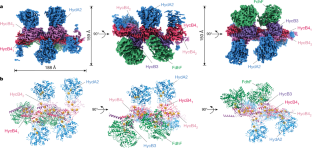MRI画像の電子的比較により、病気の早期発見に新たな可能性 Electronic comparison of MRI images opens up new possibilities for early detection of diseases
2022-09-22 マックス・プランク研究所
科学者たちは、フラウンホーファー電気通信研究所と協力して、ネットワークの推定年齢を分析するために使用できる新しい解釈アルゴリズムを開発した。
これによって、人工ニューラルネットワークが、特に、白質を利用して、予測を行うことが分かった。特に脳の神経組織の中に小さな亀裂や傷がいくつあるかということに着目している。大脳皮質の溝の幅や、脳室と呼ばれる空洞の大きさなども分析する。興味深いのは、人工ニューラルネットワークが、このような情報を与えられずとも、自力でこの結果を導き出したことだ。訓練段階では、脳のスキャン画像と、その人の本当の年齢しか知らなかった。
<関連情報>
- https://www.mpg.de/19260712/determining-age-from-brain-scans?c=2249
- https://www.sciencedirect.com/science/article/pii/S1053811922006206
マルチモーダルニューロイメージングのための深層学習モデルの解釈可能性に向けて。加齢に伴う脳の構造変化の発見 Towards the interpretability of deep learning models for multi-modal neuroimaging: Finding structural changes of the ageing brain
Simon M.Hofmann,Frauke Beyer,Sebastian Lapuschkin,Ole Goltermann,Markus Loeffler,Klaus-Robert Müller,Arno Villringer,Wojciech Samek,A. Veronica Witte
Neuroimage Available online: 23 July 2022
DOI:https://doi.org/10.1016/j.neuroimage.2022.119504

Abstract
Brain-age (BA) estimates based on deep learning are increasingly used as neuroimaging biomarker for brain health; however, the underlying neural features have remained unclear. We combined ensembles of convolutional neural networks with Layer-wise Relevance Propagation (LRP) to detect which brain features contribute to BA. Trained on magnetic resonance imaging (MRI) data of a population-based study (n = 2637, 18–82 years), our models estimated age accurately based on single and multiple modalities, regionally restricted and whole-brain images (mean absolute errors 3.37–3.86 years). We find that BA estimates capture ageing at both small and large-scale changes, revealing gross enlargements of ventricles and subarachnoid spaces, as well as white matter lesions, and atrophies that appear throughout the brain. Divergence from expected ageing reflected cardiovascular risk factors and accelerated ageing was more pronounced in the frontal lobe. Applying LRP, our study demonstrates how superior deep learning models detect brain-ageing in healthy and at-risk individuals throughout adulthood.


